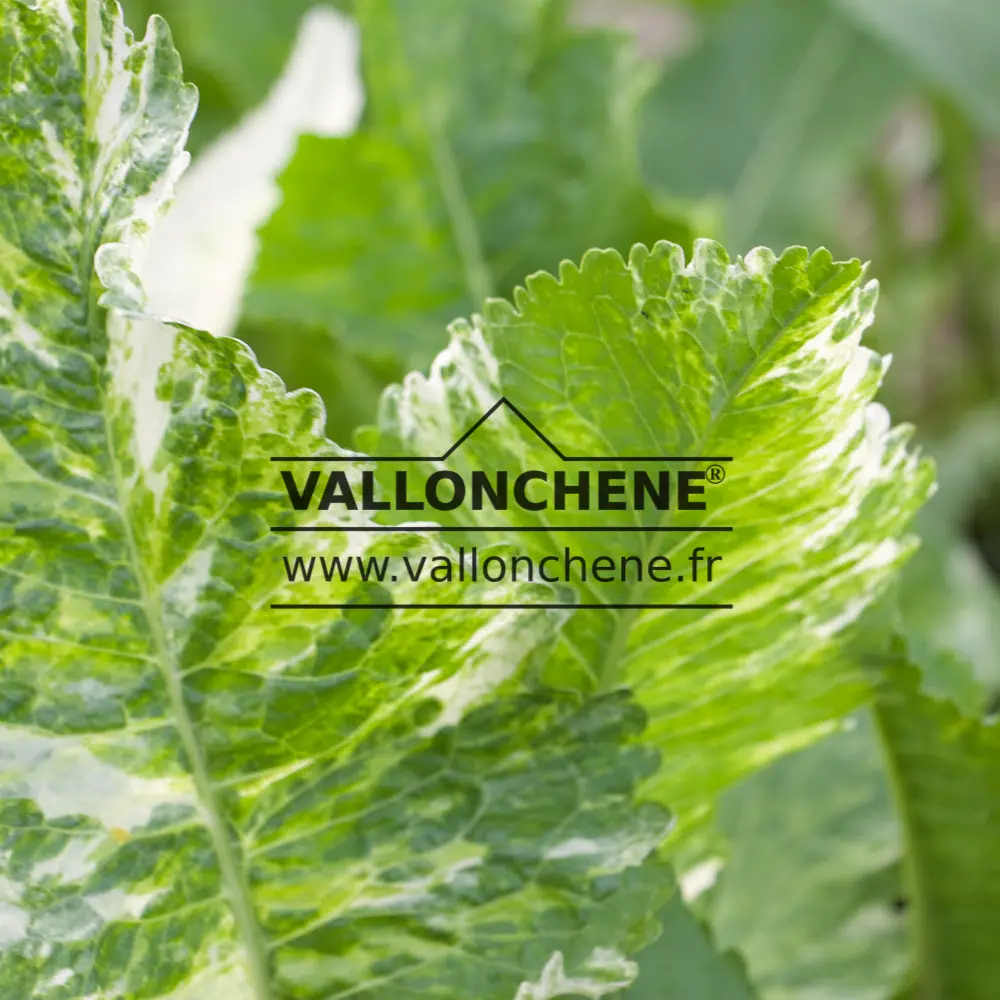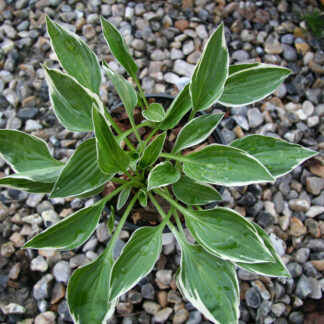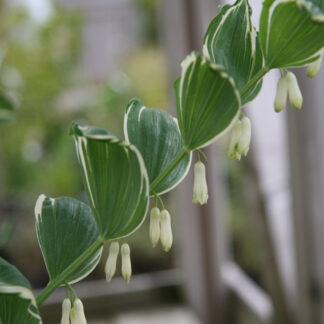Description
ARMORACIA rusticana ‘Variegata’ is a perennial plant better known as variegated horseradish. Although it is usually grown in the vegetable garden, the selection we offer decorates with its super variegated foliage. The leaves are 50-60 cm long. They can also be used to create your flower arrangements. It is the ideal perennial to illuminate a bed in the sun or in the shade.
ARMORACIA rusticana ‘Variegata’ comes from division, delivered in large pots. Thus, you are sure to immediately enjoy the beauty of this plant.
How to plant ARMORACIA rusticana ‘Variegata’
Easy to grow in ordinary soil, this variegated horseradish can be grown by any gardener, even a beginner. It is very resistant to temperatures below -20 °C. This perennial plant tolerates all pH levels. It grows equally well in full sun, partial shade or shade.
History and origin
ARMORACIA rusticana has been cultivated since antiquity. A wall decoration from Pompeii displays the plant.
In nature, it is found in wet pastures, along rivers and streams.
In the Middle Ages, both the leaves and the roots were used in traditional medicine. The roots are still used as a condiment mainly in Germany, Scandinavia and Great Britain. However, it is also used in Ukraine, Belarus, Poland, and Russia.
Moreover, it is used today frequently in Japan in the preparation of wasabi. Usually, wasabi consists of the wasabi plant (WASABIA japonica). However, its rarity leads Japanese cooks to use horseradish to replace it.
In addition, horseradish is used to increase natural defenses and resistance to colds. It contains a lot of vitamin C. Some oils made from horseradish have antiviral abilities. The Germans declare it in 2021 as the medicinal plant of the year. This distinction was created in 1990 by the Verband der Heilkräuterfreunde Deutschlands e. V. It continues with the NHV Theophrastus.
Horseradish, like ARMORACIA rusticana ‘Variegata’, hardly produces seeds. Therefore, its multiplication is done by division.
Finally, the horseradish peroxidase enzyme contained in ARMORACIA rusticana is widely used in molecular medicine and biochemistry. Indeed, it can reinforce a signal and increase the detectability of a target molecule.






